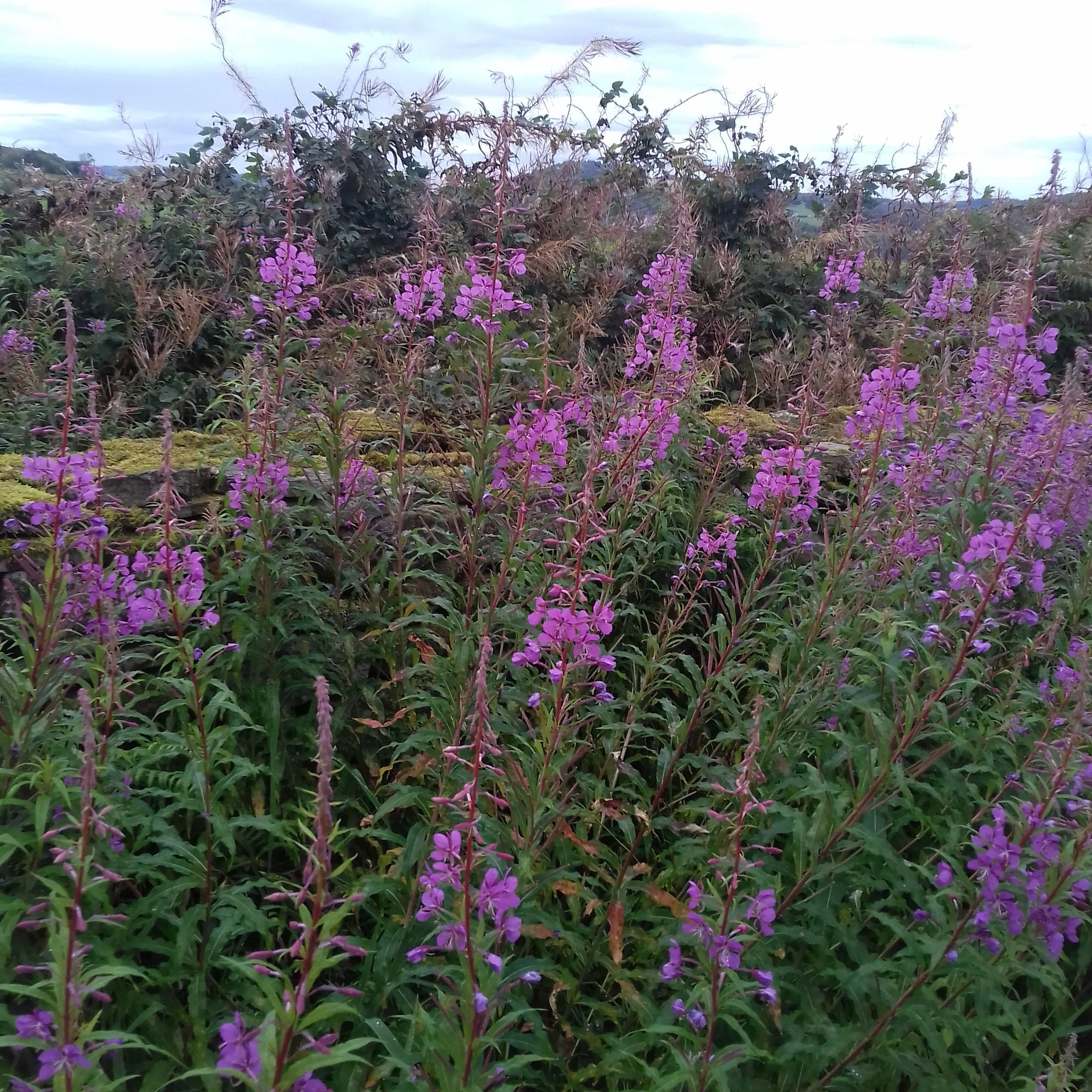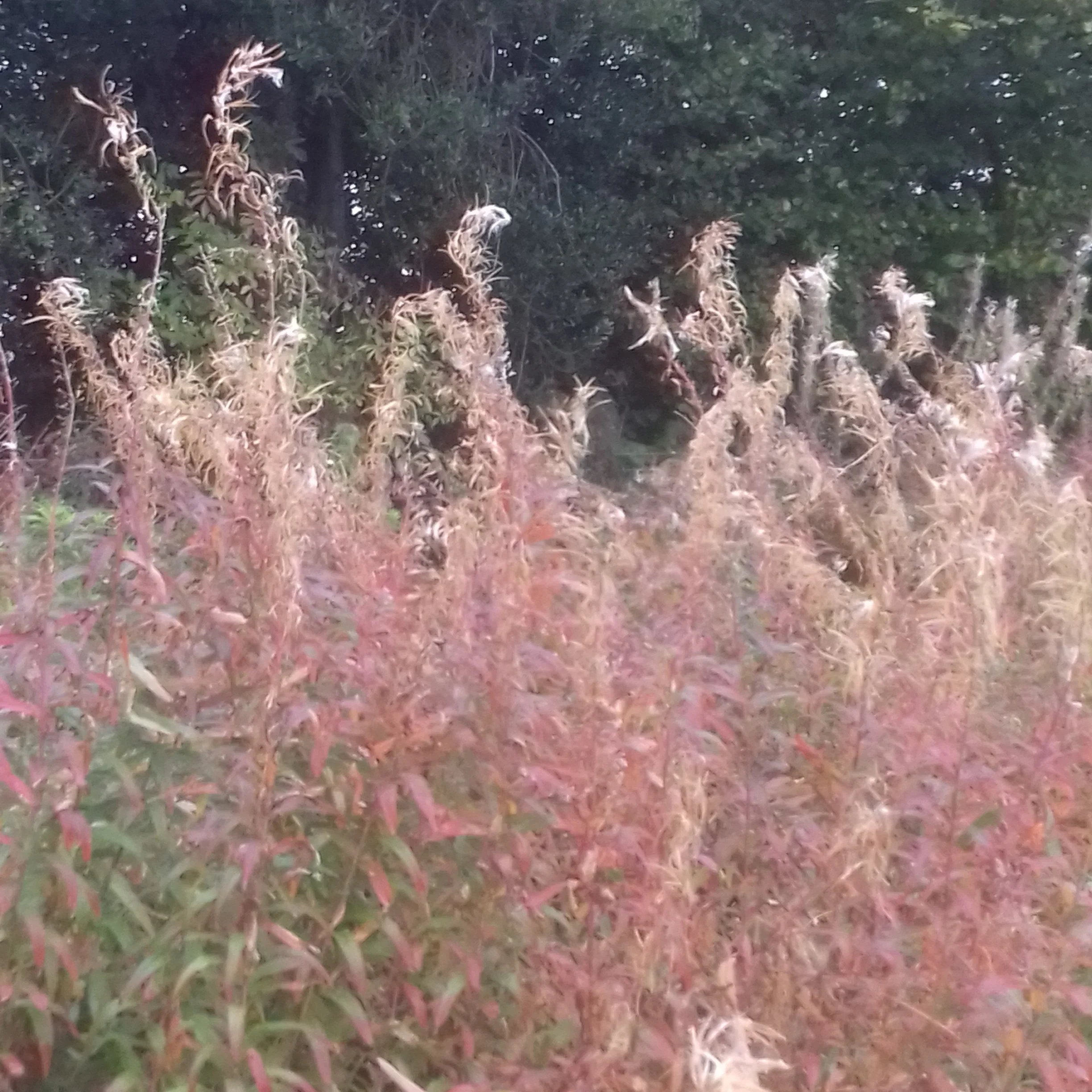Rosebay Willowherb – Fireweed in Bloom
One of the most striking and widespread wildflowers of the British summer, Rosebay Willowherb (Chamerion angustifolium) is often dismissed as a weed — but I think it deserves much more attention and admiration. It lights up roadsides, railway embankments, woodland clearings, and even the edges of car parks with its tall, vibrant spikes of pink-purple flowers. A true survivor and pioneer plant, it tells stories of change, resilience, and return.
🌿 Name
Rosebay Willowherb is also known as fireweed, a name that hints at its ability to quickly colonise burned or disturbed ground. In the UK, it was once uncommon, but after the Second World War, it gained a strong association with recovery — earning the nickname “bombweed” for its abundance on bombed-out sites in London and other cities.
Its Latin name Chamerion angustifolium means "narrow-leaved," referring to its long, willow-like foliage.
🌱 Habitat
Rosebay Willowherb loves disturbed ground — anywhere the soil has been cleared, exposed, or burned. It’s a familiar sight on verges, woodland edges, railway embankments, and even abandoned urban corners. Its seeds travel easily on the wind, and its rhizomatous roots help it spread quickly in open spaces.
It prefers sunny spots with moist, well-drained soil — and it often thrives in places where little else is growing.
Past and Future Summers (2019) 80×80 cms
🌸 Description
A tall, elegant wildflower, Rosebay Willowherb can grow well over a metre high, with vivid pink-purple flowers that bloom up long spires from June into early autumn. The four-petalled flowers are delicate and lightly fragrant, and its seed pods split open in late summer to release tufts of white, silky seeds that drift like smoke on the air.
It’s a favourite of pollinators, especially bees and butterflies.
Silver Seeds (2019) 100×80 cms
🧚 Folklore and Uses
While not as steeped in folklore as some native plants, Rosebay Willowherb carries strong symbolic weight. Its reputation as a plant of regeneration and renewal comes from its ability to grow in burned or broken places — returning colour and life to bare earth.
The young shoots were once eaten in parts of Europe like asparagus, and its leaves can be brewed as tea. In Russia, fermented willowherb leaves are made into Koporye tea.
🏡 A Personal Connection
I first became truly aware of Rosebay Willowherb during a residency I completed with Gwent Wildlife Trust. I stayed in their remote cottages during July and the elemental quiet made every sign of colour and life feel especially vivid.
In the margins of meadows beside stone walls, Rosebay Willowherb bloomed — defiantly, brilliantly — like flames licking up through the undergrowth. It felt like the land quietly asserting itself, as the nearby haymeadows were cut and the bright colour really stood out among the dries golden fields.
During that time, I made a number of paintings and photographs inspired by the residency. They’re part of an ongoing exploration of how wildflowers mark time, memory, and place.
🖼️ Why I Love It
Rosebay Willowherb has a wild, scrappy kind of beauty. It doesn’t ask for perfect conditions — it finds its moment and claims the light. Whether pushing through pavement cracks or filling the edges of forgotten paths, it reminds me that even in the most unlikely places, something vibrant and full of life can take root.
Moment (2024) 80×80 cms
My latest paintings are on my available work page.








